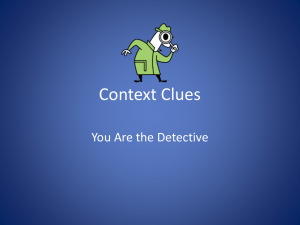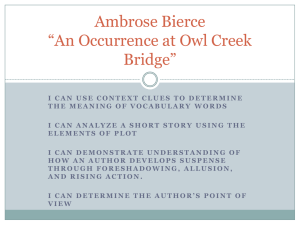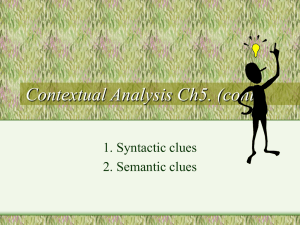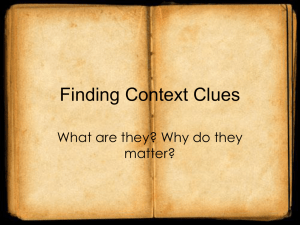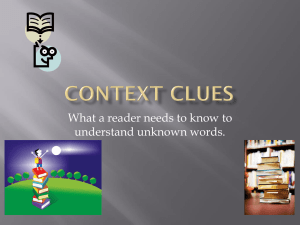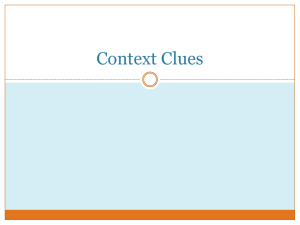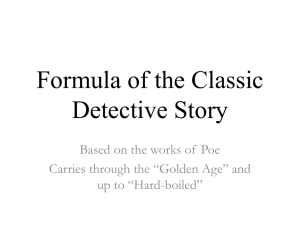Mystery Elements Powerpoint - christopher-coles
advertisement
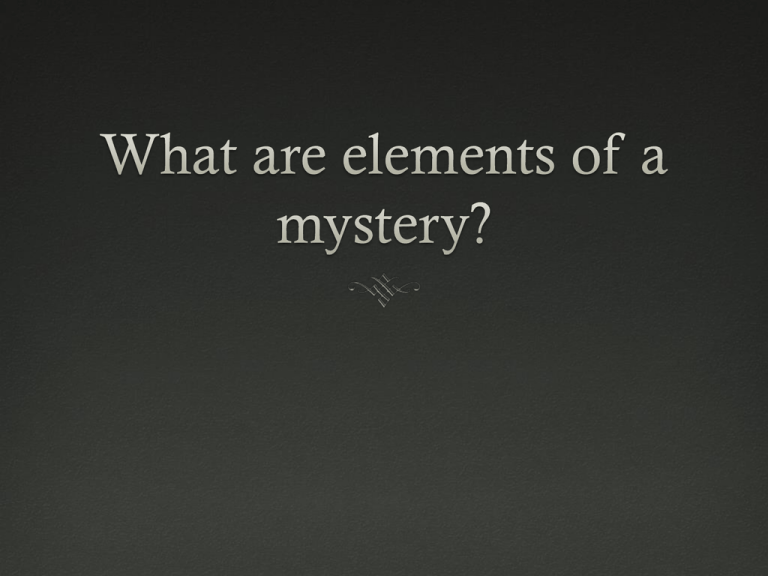
Definition: A narrative that involves a crime or intriguing problem which the plot is built. The main character (sleuth) embarks on a search to reveal the hidden secrets to explain the clue-based events, find truth, and solve the problem. The focus is on the character and actions of a person solving a crime rather than on the criminal or victims of the crime. Purpose: To involve the reader in the characters’ quest (speculations and predictions) to solve an intriguing problem To engage the reader in the excitement of suspense leading to the thrill of the solution To engage the reader in gathering clues, analyzing clues, and prediction To intrigue/entertain the reader with questions who did it, what happened and why, and if and when the crime or problem will be solved Characteristics: Follow narrative structure and contains narrative elements: characters in setting with the problem, creating conflict or tension through events leading to a climax, then a final solution Sometimes classified as historical fiction, adventure, and realistic fiction Suspense is the chief element Includes various subgenres which are defined by the inclusion of public and private detectives as well as amateurs Theme: Progressively revealed as character discovers clues to react to events Characters: Main characters are fully developed and realistic Supporting characters are flat, or underdeveloped The protagonist is the detective, sleuth, or main character, and is fully developed through descriptions of appearance, actions, speech, opinions and what others say and think about him or her The antagonist is the villain; suspects are also presented as possible villains The victim is a target of an evil deed Character reactions to clue-based events provide hints/motives Setting: Mood (typically dark, dreary, mysterious, scary) Can be important or backdrop (unimportant) depending on the type of crime or mystery Plot: Focused on a crime, puzzle or unusual problem to solve Progressive, complex plot development leads to successful resolution which includes a: 1. Series of interrelated events 2. Strategically placed clues(e.g. fingerprints, letters, notes, secret codes) are revealed by observing characters’ actions and motives 3. Progression of “discoveries” Plot: 4. Development: a. Conflict = Crime b. Strategically placed clues and character reactions to clues. c. Climax involving interactions between sleuth and villain d. Conclusion revealing motive and resolutions of crime Author’s craft: Development of interrelated, suspenseful events Use of foreshadowing (inclusion of clues to solve the mystery) Suspenseful cliffhanger chapter endings compel the reader to continue Red herring (clues) throw reader off track Infusing clues for the reader 1. Hints provided through dialogues 2. Hints provided by characters’ actions, and observing and their interactions Adapted from: The Genre Project of the Michigan Department of Education



